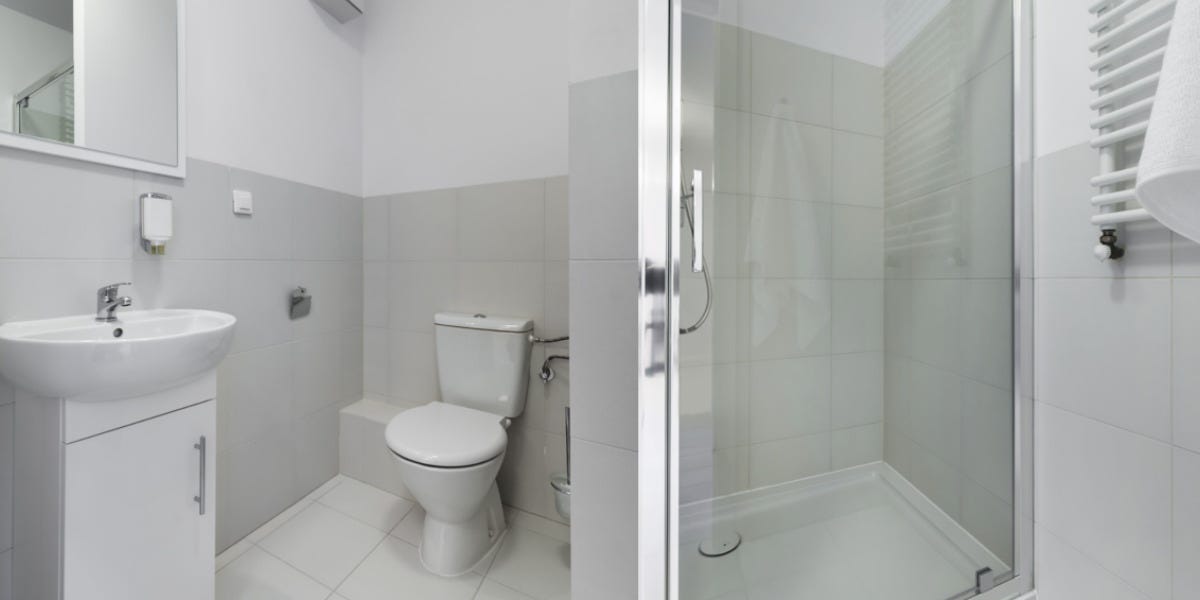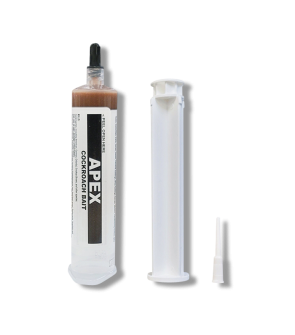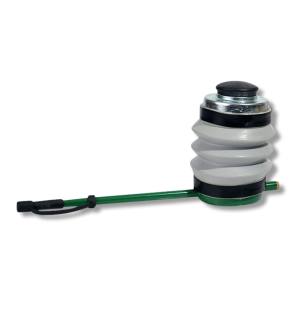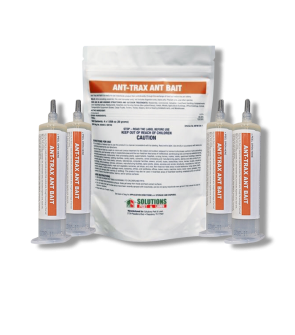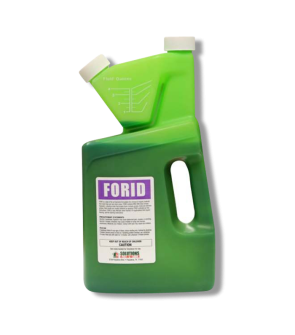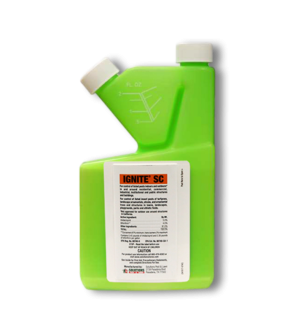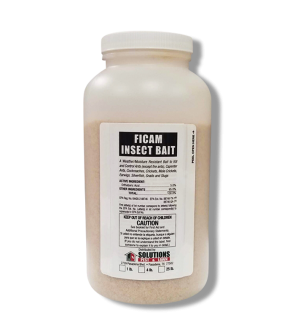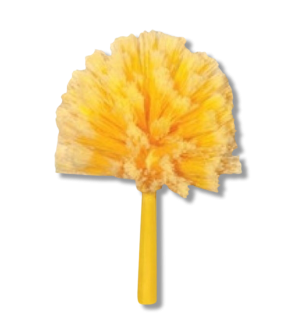Insects in Bathroom
Most Effective Products
Common Insects in Bathrooms
All sorts of creepy pests can be found in bathrooms thanks to the moisture and sufficient hiding places it provides. After a long day at work, the last thing any homeowner would want to find is a pest traveling across the tub or shower.
Perhaps the most common insects to find in your bathroom are cockroaches, ants, silverfish, drain flies, and earwigs. These tiny pests can leave homeowners feeling frustrated since these spaces are used regularly.
Whether you have seen one pest or haven’t seen any signs of pests yet, these insects can turn into a major problem if left unaddressed. To reclaim your bathroom as your own, check out each section and link to learn more about these pests.
If you are not seeing any of the pests you have read here, then contact our customer service team by phone or email for professional tips.
Ants
All types of ants can wreak havoc in your bathrooms, but the most common ones are the argentine ant, carpenter ant, and the odorous house ant.
With their high-powered sense of smell, capacity to bite or sting, and ability to work together in large colonies to forage and nest causes stress for any homeowner.
Identification

For a better reference look at the image above: On the left is the argentine ant, in the middle is the carpenter ant, and on the right is the odorous house ant.
Argentine ants are medium-sized pest that vary to a light to dark brown coloration. They are about 2-3 mm long and have a smooth, hairless body.
Carpenter ants are of the largest ant species measuring about 0.25 to 0.75 inches long. Depending on the species, they range in colors from black, brown, red, yellow, orange, or a combination of black and red.
Adult worker carpenter ants are usually wingless, but the swarmer ants (those intended to breed) possess two sets of wings.
Odorous house ants are brownish to black colored insects, ranging about 1/16th to 1/8th inches long. When crushed or threatened, they smell like rotten coconuts. Their body is segmented and oval-shaped.
Inspection
 Argentine ants create nests in areas of moisture like around pipes, behind walls or sinks, and under floors of bathrooms.
Argentine ants create nests in areas of moisture like around pipes, behind walls or sinks, and under floors of bathrooms.
Carpenter ants prefer to create their nests in damp, rotten wood in bathrooms. This could be window ledges, cracks or crevices in walls or around windows, and spaces around plumbing, electrical wiring, and heating and cooling ducts.
Odorous house ants set up indoor nests where there is warmth and moisture like within wall voids, insulation, near plumbing fixtures and vents, around bathroom sinks, showers, and bathtubs in the bathroom walls.
Treatment
Step 1: Reduce Moisture
If ants are in your bathroom, it is likely there is standing water in or around it. Take a moment to observe where ants are coming from by looking for ant trails.
The worker ant of that species leaves behind a pheromone trail along the path they travel towards the reliable food or water source.
If you see lines of ants traveling to and from a specific area this is possibly the water source.
If you find ants crawling all over your bathtub or sink, do your best to wipe off the water. Dry off the floor and other surfaces contacted by moisture in your bathroom.
Even the smallest amount of condensation on walls will attract ants.
Swarms of ants under sinks and around plumbing, might indicate that you have a leaky pipe or other water issues going on in the wall. Fix and repair these fixtures causing leakage.
Water can cause wood to rot, which in return attract ants like carpenter ants. Make it a point to replace any wet or rotted wood in and around bathrooms.
You can also adjust the temperature in your bathroom or leave the bathroom exhaust fans running to avoid moisture buildup.
Step 2: Clean Drains
It is not often you see ants coming out of the drains in your bathroom, but they do have their reasons.
Ants are coming out of your plumbing because they are attracted to the hair, toothpaste, skin, organic shower products, and other debris caught hidden in the drains.
Eliminate this food source by cleaning drains in your bathroom with Forid Drain Gel Cleaner.
Forid Drain Gel Cleaner is an organic cleaner that uses a microbial grease degrader (MGD) to break down organic material in drains pipes.
You may need to use a pair of tweezers or pliers to remove clogs like hairs from drains.
Let 1 to 2 gallons of warm water run through the bathtub, floor, and sink drains at the end of the day or when everyone is done using the restroom for the rest of the day.
Use 4 fl. oz. of Forid Drain Gel Cleaner per drain to break down organic materials.
Pour the product around the lip of the drain so that it can drip down the sides.
This product will not kill ants or any other pests, but it will remove food sources in the drains to lessen their activity.
Step 3: Set Baits
 Depending on the species of ants you are trying to control, you will want to use either a gel bait like Ant-Trax Ant Bait or a granule bait like Ficam Insect Bait.
Depending on the species of ants you are trying to control, you will want to use either a gel bait like Ant-Trax Ant Bait or a granule bait like Ficam Insect Bait.
Ant-Trax Ant Bait is a desirable gel bait that lures and kills ants (except carpenter, fire, and harvester ants) through the exchange of the food bait, resulting in complete ant colony infestation.
Ficam Insect Bait is an orthoboric granule bait that mimics food, is moisture resistant, and quickly eliminates ant species and more pests.
To use Ant-Trax Ant Bait, apply 4 drops or 0.006 oz. of product per square yard of treatment area.
To use Ficam Insect Bait, apply 6 oz. of product per 100 sq. ft. You will need to use a bulb duster to apply this product with.
Both products will need to be applied in areas that are inaccessible to children and pets.
Insert Ant-Trax Ant Bait as a rounded spot or thin beads into cracks and crevices and under baseboards, sinks, countertops, around water pipes, water heaters, and close to foraging ant trails.
Place Ficam Insect Bait only into cracks, crevices, and voids around plumbing pipes under sinks in bathrooms and showers. Pull back escutcheon plates around pipes to allow access to the void.
Step 4: Seal Cracks and Crevices
 Fill in all indoor and outside cracks, crevices, and gaps with caulk to stop ants from creating colonies near your bathroom and other parts of your home.
Fill in all indoor and outside cracks, crevices, and gaps with caulk to stop ants from creating colonies near your bathroom and other parts of your home.
Larger voids may need to be filled in with other appropriate materials to prevent ants from coming into your bathroom.
Cockroaches
Known for their affinity for sewers and drains, cockroaches like the German cockroach or oriental cockroach are common roach species to reside in bathrooms.
Disgusting and frightening to most, and for good reason as roaches can transmit serious illnesses to people.
Identification
For a physical image: On the left is the German cockroach and on the right is oriental cockroach.
German cockroaches are flat, oval-shaped roaches with a light brown to black coloration and two distinctive parallel stripes running down behind their heads. They have wings, but rarely fly.
Compared to many other roach species, German cockroaches are very small measuring about ½ of an inch in length.
Oriental cockroaches are slightly bigger than German cockroaches. The female of this species measures approximately 1.25 inches whereas the male is 1 inches long.
Oriental cockroaches display shiny, dark brown or black colored bodies and have wings that do not support flight. Much like German roaches, they will run just at a slower pace.
Inspection

German cockroaches hide around plumbing and wiring in bathrooms, under sinks, in walls, undisturbed cabinets, garbage cans, sink traps, behind and around toilets, and cracks or crevices in walls or floors.
Oriental cockroaches are more fond of hiding outdoors, but they can come into homes. In bathrooms, they are found near toilets, sinks, exposed pipes or plumbing, under sinks or drains, holes in walls or floors, and other dark or moist voids.
Treatment
Step 1: Keep Bathrooms Clean
Maintaining a clean bathroom will lower your chances of getting infested with cockroaches to begin with. If it's already happened though, this should be your first step.
Wipe down any surfaces in your bathroom daily with a towel to eliminate moisture. Look for any leaks as well around pipes or condensation on walls and eliminate it.
Running an exhaust fan in the bathroom can help with moisture, but repairs may be necessary for any leaking plumbing.
Regularly dispose of bathroom trash to an outdoor receptacle that is several feet away from your home's foundation.
Store personal care products like soap bars, toothpaste, lotions, and other toiletries in airtight containers so the fragrances do not attract roaches.
Drains will need to be cleaned in the bathtub, floor, and sink to further eliminate food attractants. We recommend using Forid to clean out the bathtub, floor, and sink drains in your bathroom.
At the end of the day when everyone is done using the bathroom, run 1 to 2 gallons of warm water through the bathtub, floor, and sink drains before application.
Apply 4 fl. oz. of Forid Drain Gel Cleaner per drain. Pour this product evenly around the lip of the drain so that it can evenly run down the sides.
Step 2: Use Gel Baits
Once the food and water source has been eliminated, apply baits labeled to control cockroaches in the bathroom.
Apex Cockroach Gel Bait work by attracting roaches like the German and Oriental with 11 different food attractants then kills them once they consume the product.
This product contains a slow-acting formulation to allow enough cockroaches to eat the material and spread to other roaches in hard-to-reach areas for full elimination.
Depending on the species you are trying to control the rate will vary. To control small roaches like German cockroaches, you will need to apply 3 drops of Apex Cockroach Gel Bait, or approximately 0.0047 oz. per square yard. To control larger roaches like the oriental cockroach, you will apply 5 drops of product , or approximately 0.0071 oz. per square yard.
Place this product as rounded drops into cracks and crevices or a spot treatment on areas where pets and people cannot reach.
This could be under baseboards, sinks, countertops, water heaters, around plumbing penetrations, and other cracks, crevices, and small openings where roaches may be a problem.
Step 3: Seal Hiding Spaces

Use appropriate and waterproof caulking material in and around cracks, crevices, or gaps.
To keep cockroaches out of your sink drains, consider installing a water trap to prevent blockages and discourage these pests further from entering.
Drain Flies
Little moth-looking flies flying around your bathroom or coming out of the sink? If so, they are probably drain flies who sometimes appear suddenly and mysteriously, becoming a fast nuisance with their large populations.
Drain flies are not known to bite or animals, but they can cause health hazards such as triggering asthma or spreading bacteria on surfaces you contact daily.
Identification

Inspection

Treatment
Step 1: Resolve Stagnant Water
First thing you should do is remove any standing or stagnant water in your bathroom. These fuzzy flies thrive in moist environments, particularly where organic matter is present.
Dry off water around or on the bathtub, shower, sinks, countertops, and exposed plumbing in the bathroom. Any houseplants kept in the bathroom will need to have the soil replaced as well.
Repair all fixtures or plumbing causing leakage.
By addressing these sources of moisture, you can eliminate and prevent the possibility of a drain fly infestation.
Step 2: Unclog Drains Regularly
In order to get rid of drain flies, you will need to clean all drains in your bathroom and other parts of your home.
Drain cleaners like Forid Drain Gel Cleaner offer a complete control over organic matter in drains, which in return prevents drain flies from breeding. Other obstructions in drains like hair will need to be removed with a pair of tweezers or other appropriate tool.
Start by letting 1 to 2 gallons of warm water flow through drains before application of Forid Drain Gel Cleaner. Best to do this at the end of the day when all cleaning and sanitizing products are done, and everyone is finished with the bathroom.
Apply 4 fl. oz. of Forid Drain Gel Cleaner per drain. Pour this product around edge of the drain, attempting to coat the side of the drain.
Forid Drain Gel Cleaner will not kill drain flies or other pests, but will eliminate their breeding grounds and food supply. To continue to control and prevent drain flies, repeat applications daily as needed or every 1 to 2 weeks.
Silverfish
Have you ever walked into your bathroom and wondered what those silver bugs were, odds are they are silverfish. These bugs can destroy wallpaper, carpets, towels, clothes, starch or protein-rich foods, and prompt allergies.
Identification
Silverfish measure about ½ inches in body length, boasting elongated and oblong shaped bodies. Their coloration is a solid, metallic silver and they have two long antennae protruding from their heads. They also have three tail-like appendages on their last abdominal segment.
Inspection
Silverfish get into bathrooms through cracks, crevices, and other voids around sinks, windows, plumbing, toilets, floors, and tub areas.
They will feed on glue, wallpaper, masonry in tile joints, photos, clothing, drapes, carpet, rugs, towels, linens, leftover hair, cardboard boxes, and other starchy materials kept in bathrooms.
These pests are nocturnal creatures that will only come out at night or when it is dark. When spotted they will quickly move across these surfaces in a fish-like manner.
Treatment
Step 1: Reduce Humidity and Food Sources
Silverfish love moisture so you will need to keep everything in the bathrooms as dry as you can. Wipe off all counter surfaces, floors, walls, and tubs that are wet. Avoid leaving laundry hampers or wet clothing and fibers in the bathroom for long periods of time.
Magazines, newspapers, or other articles of papers that are left out in the open of bathrooms should be thrown away in an outdoor trashcan. Objects like toothpaste, towels or paper towels, and tissues should be kept in airtight plastic containers.
We also recommend cleaning off hair brushes and other skin care tools as silverfish will travel to these items to eat these materials off of them.
Reseal any damaged caulking, weather-stripping around windows, and make the necessary repairs around leaky plumbing fixtures. Also fill any cracks, crevices, and voids with the appropriate materials.
Step 2: Clean Drains
Silverfish do not live in drains, but they are attracted to them because of the moisture and organic matter that collects in them like hair, skin, and toothpaste.
We recommend using a pair of tweezers of needle-nose pliers to remove hair from drains and Forid Drain Gel Cleaner for all other organic matter.
Before treating drains, be sure to let 1 to 2 gallons of warm water run through them. Afterwards, apply 4 fl. oz. of Forid Drain Gel Cleaner per drain.
Coat the lip of the drain so that it runs down the sides. Repeat this process daily for 5 to 7 days.
Apply this product at a time when the drains are not being used for a while, such as overnight or at the end of the day.
Step 3: Use Ficam Insect Bait

To use Ficam Insect Bait as a crack and crevice treatment you will need to use a bulb duster.
For crack and crevice treatments, use 6 oz. of Ficam Insect Bait per 100 sq. ft. Make 2 to 6 puffs per lineal foot, depending on the severity of silverfish infestation.
Insert duster into gaps, cracks, and crevices around plumbing pipes behind water heaters or under sinks, around baseboards, beneath cabinets, voids in bathroom showers, and other openings around drains and electrical conduits.
Spiders
Spiders can be found anywhere in your home, but the bathroom is attractive to them because of the amount of food it provides. As predators, they often feed on other smaller insects found in bathrooms.
This room also gives enough dark spaces for common bathroom spiders like the wolf spider, brown recluse spider, or cellar spider to breed and produce offspring. Some spider species like the brown recluse spider are highly venomous to people and animals.
Identification
For a visual reference look at the image above: On the left is the brown recluse spider, the middle is the cellar spider, and on the right is the wolf spider.
Brown recluse spiders are pale tan to dark brown or a dull yellow coloration with a violin or fiddle shape on its back. Usually they are ¼ to ½ inches long and have six to 8 eyes arranged in a semicircle.
Cellar spiders have 8 incredibly long, thin legs and 2 body segments. The other type of cellar spiders, also known as daddy long legs or harvestman, only has one body segment. These spiders will be light brown or gray whereas harvestmen have a more reddish coloration.
Wolf spiders are usually gray to bright brown with black markings. Their 2 segmented bodies and legs are covered in bristly hairs and they fang-like mouthparts to hunt for their food since they do not create webs.
These spiders also have 8 large and prominent eyes. There are 2 large ones on top of the head, 2 on the front, and 4 small eyes in the lowest row.
Inspection
Brown recluse spiders prefer to hide in secluded areas like wall voids, corners of wall crevices, and the side of cabinets next to walls in bathrooms. They can create webs like other spiders, but they will create irregular flat webs or hunt for their prey on foot.
Cellar spiders create webs in dark areas with high humidity levels like the upper corners of walls, near shower or sink drains, corners of windows, in cabinets, and other areas with minimum activity in the bathroom.
Wolf spiders do not create webs, but prefer to hunt for insects along floors, walls, and corners of bathrooms.
Their habitat is mainly outdoors, so if you are seeing any in your bathroom it probably wandered in through outdoor cracks, crevices, and voids around the window or door frame, or on the foundation wall.
Treatment
Step 1: Reduce Clutter and Moisture

Mop and sweep throughout the bathroom as well as regularly take-out garbage cans to reduce attracting other insects they prey upon. Dry off any water or condensation on the walls, tubs, floors, and around plumbing to control water.
Repair any leaky water pipes and plumbing fixtures, broken window screens, and air conditioning vents.
Your bathroom also needs to be dusted to clear up any dust or web residue. We recommend using JT Eaton Yellow Cobweb Duster to clean all dust or cobwebs found in and around your bathroom.
JT Eaton Yellow Cobweb Duster is a threaded duster head made to remove both dust and cobwebs hard to reach or difficult to clean areas. Upper corners will need this product to be attached to the Extender Pole Webster to reach them.
Step 2: Treat Voids with Insecticide
To kill off spiders and prevent their nests in your bathroom, we recommend spraying Supreme IT. You will need to remove all belongings from the area to be treated before application.
Apply 0.33 to 1 fl. oz. of Supreme IT in 1 gallon of water per 1,000 sq. ft. We recommend mixing and spraying with a handheld pump sprayer.
To mix, fill the sprayer with half the amount of water and add the measured amount of Supreme IT. Next, pour in the remaining half of water and secure the lid. Agitate the tank well until solution is well-mixed before spraying.
As a crack and crevice or spot treatment, spray Supreme IT around window frames, pipes that enter the wall, under sinks, under cabinets, underside of shelves, and corners of rooms.
Do not return objects to their original spot until the treated area has dried. Areas that hold towels or other personal care products should not be treated unless you plan on storing these items in a sealable plastic container.
Step 3: Seal Any Cracks
Spiders can easily enter your bathroom through any gaps, cracks, and crevices in the walls, windows, baseboards, or floors.
Apply caulk or approved sealant to close off any entry points you find. Make sure the sealant is appropriate for the area you are trying to fill.
Key Takeaways
What Are Those Bugs in Bathrooms
- The most common bugs to find in bathrooms are cockroaches, ants, silverfish, drain flies, and earwigs.
Why Do I Keep Seeing Roaches in Bathrooms
- Pests like cockroaches take advantage of any moisture build-up in and around pipes, walls, and floors of bathrooms. As long as these conditions exist they are going to keep coming.
How to Prevent Pests In the Bathroom
- Make sure to seal all entry points like cracks, crevices, and voids with caulk in and around your home. Next, we recommend making quarterly applications of Supreme IT around the entire outside of your house as a perimeter treatment. Use 1 fl. oz. of Supreme IT in 1 gallon of water per 1,000 sq. ft. to perform a perimeter treatment application.
